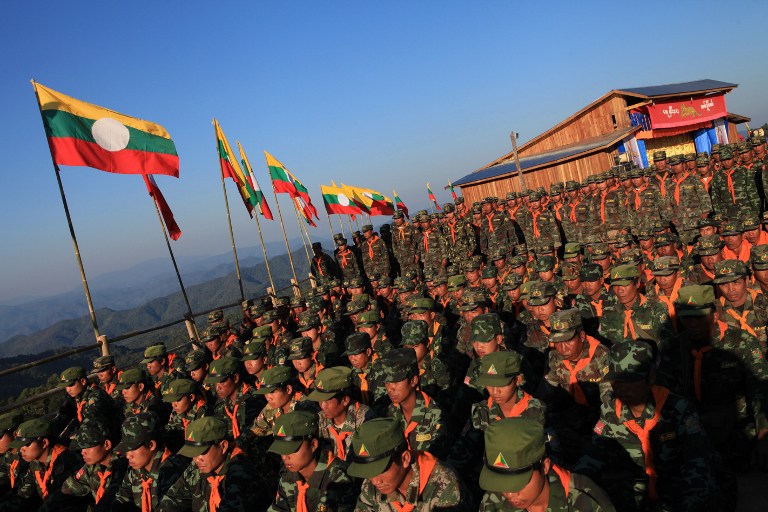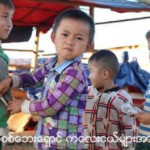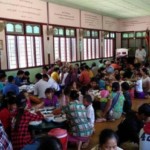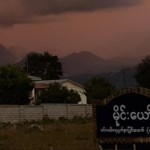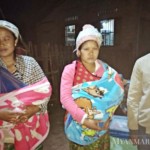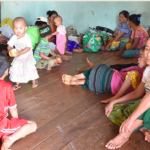RFA, April 12, 2013
More than 400 ethnic refugees in Burma’s northern Shan state are reluctant to leave the temporary camp where they have stayed for nearly two weeks for fear of clashes between rebels and government troops that broke out in late March, a relief worker said Friday.
The refugees also fear that they would be forced to work for government soldiers or the ethnic Shan militia.
Sai Kham Late, director of the refugee camp in Tangyan township’s Lwese village told RFA’s Burmese Service that 432 people from eight villages were staying at the camp to avoid what is believed to be the first major clashes since the government signed a ceasefire agreement in January 2012 with Shan State Army North (SSA-N).
The refugees had fled their homes after the Burmese military ordered the SSA-N out of the west bank of the Salween River near the construction of a Chinese-backed megadam project, leading to intensified fighting.
The SSA-N had been allowed to operate in the area under the ceasefire agreement.
“They want to go back, but they fear that there will be more fighting after they return home,” Sai Kham Late said.
“This season is farming season, so they want to raise crops. But they are concerned that the men and boys will be arrested and the women and girls forced to work
In late March, battles occurred daily along the Thalwin River in northern Shan state forcing 1,000 people from 16 villages to flock to Tangyan township to find safety, according to exile news agency Mizzima.
Mizzima quoted Sai Lu, a spokesperson of the Shan National League for Democracy (SNLD), as saying that people had been “injured from mine explosions and no one will risk returning to their hometown.”
Sai Kham Late said that the sound of gunfire could no longer be heard in the area, but that inhabitants were still wary of leaving the camp.
“We haven’t heard any fighting in this area today, but I heard that two small bombs had exploded on a road between Tangyan and [nearby] Mong Hsu township.”
Refugee aid
In the meantime, the situation at the camp, which is supported through aid from local civil society organizations and the United Nations World Food Program (WFP), is “pretty good.”
“We have a 24-hour clinic for their health care,” Sai Kham Late said.
“Yesterday, the WFP provided the refugees with enough rice, beans, cooking oil and salt for two weeks. Those of us in charge of the camp have been providing them with vegetables.”
No one is required to stay at the camp, he said, and camp officials had been working to help those few people who had decided to return to their homes.
“If they want to return home, we let them return. We are collaborating with local authorities to send them back home … by car,” he said.
“If they want to return just for a week as a test, we will provide them food for a week. We have promised to provide additional food if they want to try to stay longer.”
Sai Kham Late said that despite the threat of violence, a handful of people had decided to return to their homes in recent days.
“[On Thursday], eight people from two families returned. Today, another eight or so people went to their homes to check on the conditions,” he said.
“If they feel comfortable to return home, they will do so.”
Escalating tensions
A local resident told Mizzima news agency that as recently as April 5, “the government army captured civilians to use as porters, forced civilians to walk over landmines, and shot at [villages near Tangyan] with machine guns.”
Shan sources say that thousands of Burmese military troops, as well as tanks and artillery, have been massing in areas near Tangyan and Mong Hsu townships since February.
Tangyan lies 20 kilometers (12 miles) southwest of Nong Pha, where construction on one of six planned dams on the Salween River is under way. The Nong Pha dam was announced by Burma’s parliament on Feb. 27.
Little is known about the project, other than an announcement in December 2009 that Burma’s Ministry of Electric Power No. 1 had signed an agreement with China Hydropower Engineering Consulting Group (HydroChina) to develop a dam at Nong Pha under the then-ruling military regime.
That dam, and another at nearby Man Tung on a tributary of the Salween, will together produce 1,200 megawatts of electricity, the majority of which is expected to be sold back to China.
Earlier this month, the Shan Sapawa Environmental Organization, accused the Burmese military of “stoking war” in Shan state by demanding that the SSA-N clear troops from the banks of the Salween to make way for the dam.
“The issue of natural resources is at the heart of the conflict in Shan State,” spokesman Sai Khur Hseng said. “Selling off the Salween, the lifeblood of our state, before even bringing the issue to the table will derail the peace process for sure.”
Reported by Zin Mar Win for RFA’s Burmese Service. Translated by Khet Mar. Written in English by Joshua Lipes.
This article originally appeared on RFA. View the original article here.

